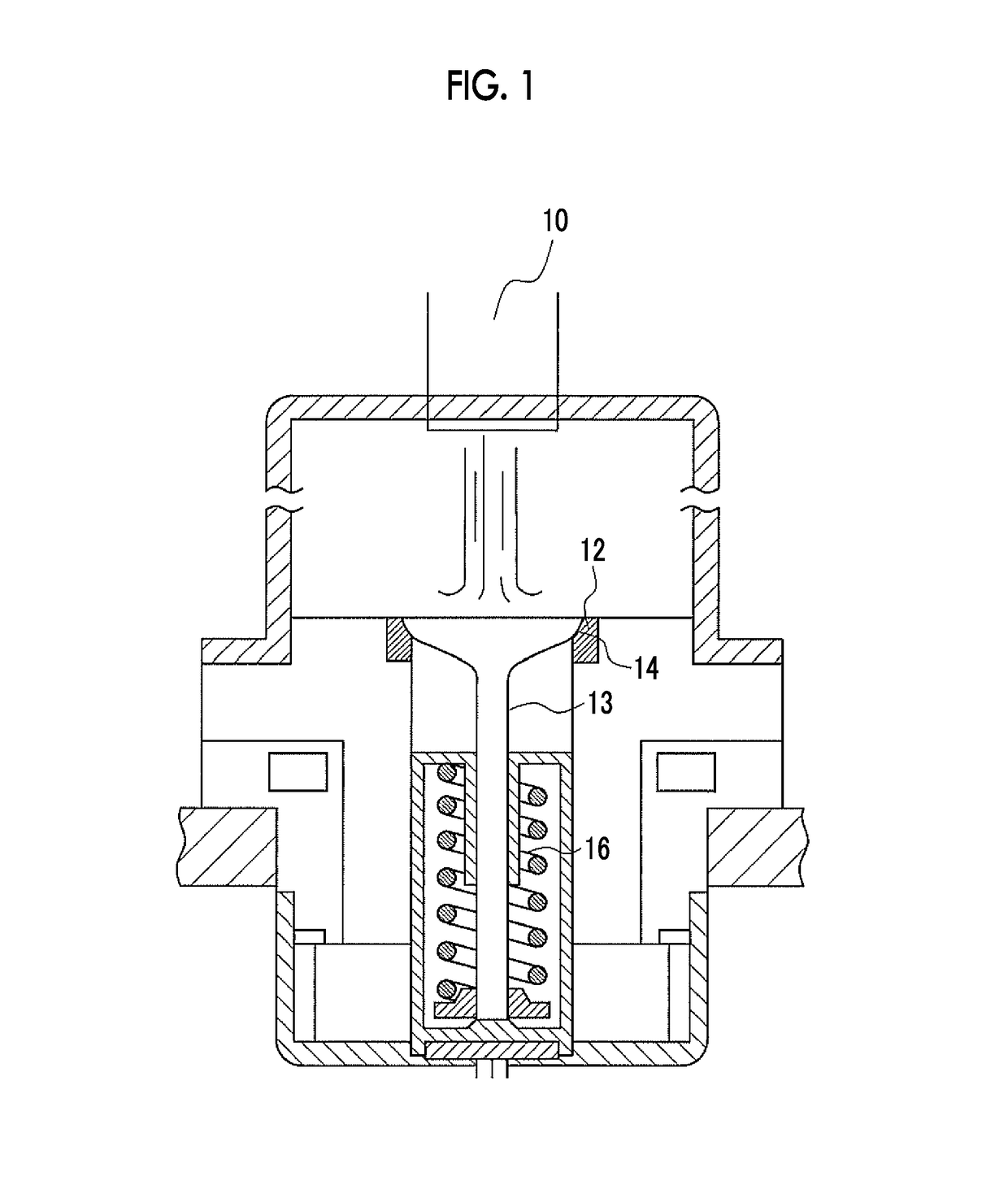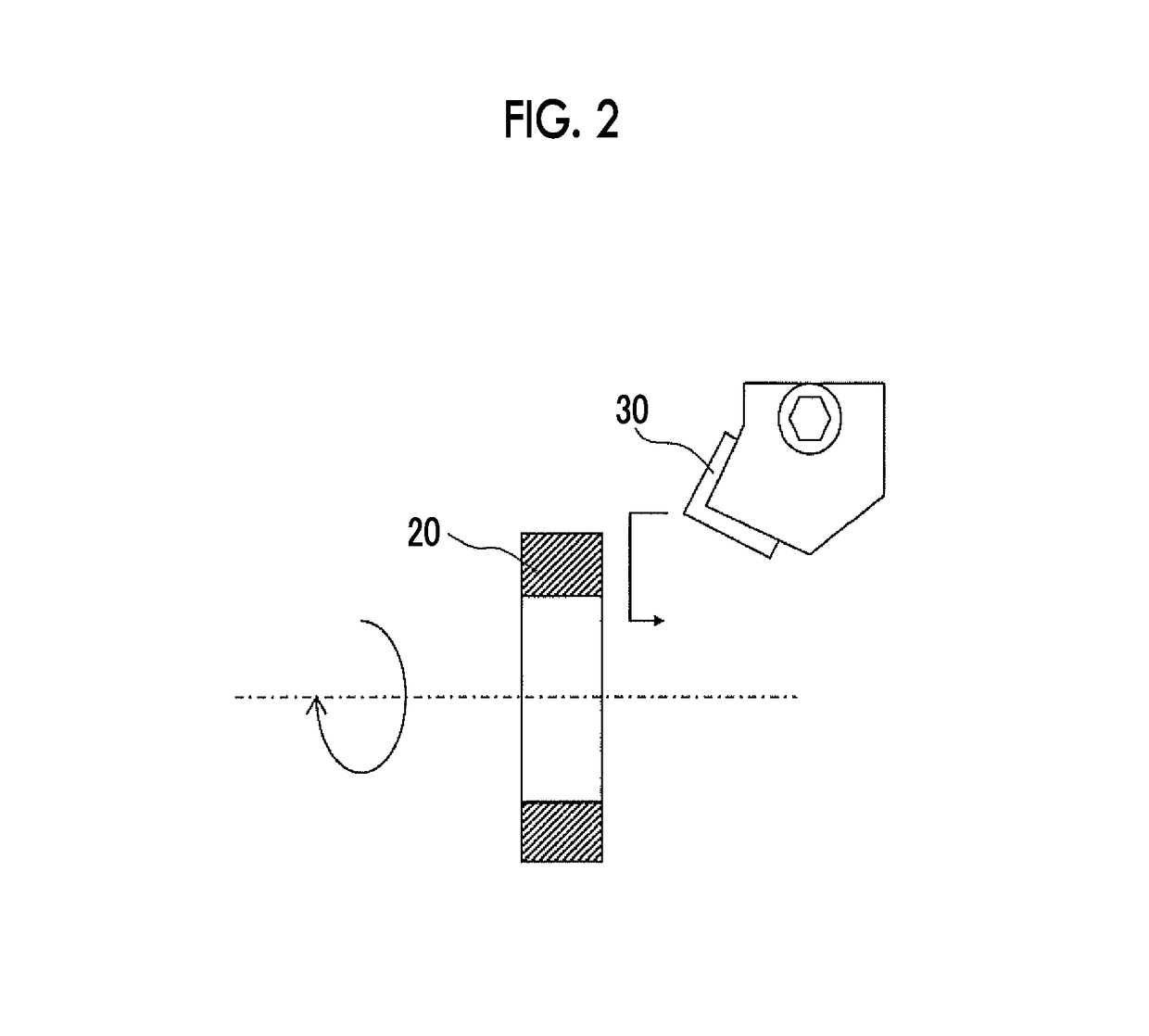Production method of sintered alloy, sintered-alloy compact, and sintered alloy
a production method and alloy technology, applied in metal-working apparatus, transportation and packaging, etc., can solve the problems of easy plastic deformation of the contact surface of sintered alloy, and reduced machinability of sintered alloy. , to achieve the effect of ensuring machinability
- Summary
- Abstract
- Description
- Claims
- Application Information
AI Technical Summary
Benefits of technology
Problems solved by technology
Method used
Image
Examples
example 1
ddition Amount of First Hard Particles
[0079]In a production method described below, a sintered alloy according to Example 1 was produced. As first hard particles, hard particles (manufactured by Daido Steel Co., Ltd) produced by a gas atomization method from an alloy containing Mo: 40 mass %, Ni: 30 mass %, Co: 20 mass %, Mn: 5 mass %, Si: 0.8 mass %, C: 1.2 mass %, and the remainder including Fe and unavoidable impurities (that is, Fe-40Mo-30Ni-20Co-5Mn-0.8Si-1.2C) were prepared. The first hard particles were classified to be in a range of 44 μm to 250 μm by using a sieve based on JIS Z 8801. In addition, the “grain size of particles” mentioned in the specification is a value classified in this method.
[0080]As second hard particles, second hard particles (manufactured by Kinsei Matec Co., Ltd.) produced by a grinding method from an Fe-65 alloy containing Mo: 65 mass % and the remainder including Fe and unavoidable impurities were prepared. The second hard particles were classified ...
examples 2 and 3
Amount of First Hard Particles
[0083]Specimens of sintered alloys were produced in the same manner as in Example 1. Examples 2 and 3 are examples for evaluating the optimal addition amount of the first hard particles. Examples 2 and 3 are different from Example 1 in that the first hard particles were added sequentially in proportions of 40 mass % and 50 mass % with respect to the total amount of the mixed powder as shown in Table 1.
example 4
[0084]A specimen of a sintered alloy was produced in the same manner as that in Example 2. Example 4 is an example in which Cr was added as a new element to the components of first hard particles. Example 4 is different from Example 2 in that hard particles produced by a gas atomization method from an alloy containing Mo: 34 mass %, Ni: 10 mass %, Co: 31 mass %, Cr: 3.7 mass %, Mn: 6 mass %, Si: 0.9 mass %, C: 1.0 mass %, and the remainder including Fe and unavoidable impurities (that is, Fe-34Mo-10Ni-31Co-3.7Cr-6Mn-0.9Si-1.0C) were used as the first hard particles.
PUM
| Property | Measurement | Unit |
|---|---|---|
| Temperature | aaaaa | aaaaa |
| Temperature | aaaaa | aaaaa |
| Percent by mass | aaaaa | aaaaa |
Abstract
Description
Claims
Application Information
 Login to View More
Login to View More - R&D
- Intellectual Property
- Life Sciences
- Materials
- Tech Scout
- Unparalleled Data Quality
- Higher Quality Content
- 60% Fewer Hallucinations
Browse by: Latest US Patents, China's latest patents, Technical Efficacy Thesaurus, Application Domain, Technology Topic, Popular Technical Reports.
© 2025 PatSnap. All rights reserved.Legal|Privacy policy|Modern Slavery Act Transparency Statement|Sitemap|About US| Contact US: help@patsnap.com



